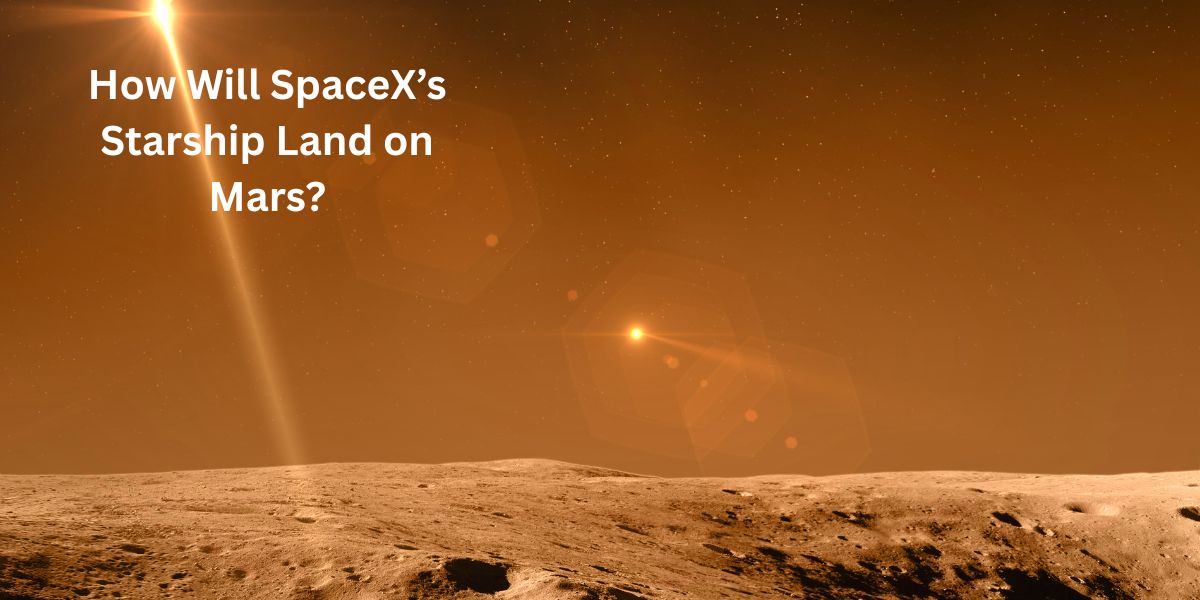Imagine a giant spaceship, bigger than a football field, flying all the way to Mars. Sounds like science fiction, right? But SpaceX, the company founded by Elon Musk, is working hard to make this real. Their Starship is designed to carry people and cargo to Mars—and one day, maybe even help humans live there!
Landing on Mars is not easy. The planet has thin air, strong winds, and a rocky surface. So how will Starship land safely? The answer involves cool technology, smart engineering, and a lot of practice.
Curious to know how this giant spaceship will touch down on the Red Planet? Let’s find out!
How Does Starship Work?
Starship is SpaceX’s biggest rocket. It has two parts:
- Super Heavy Booster – The first part that launches the ship into space. It falls back to Earth after liftoff.
- Starship – The upper part that flies to Mars, lands, and comes back.
Starship is fully reusable, meaning it can fly many times. This makes space travel cheaper and faster.
Why Is Landing on Mars So Hard?
Mars is tricky because:
- Thin Atmosphere – Mars has very little air, so parachutes don’t work well.
- Strong Winds – Dust storms can make landing dangerous.
- No Runways – Unlike Earth, there’s no smooth place to land.
Starship must slow down from thousands of miles per hour to a gentle stop—all by itself!
How Will Starship Slow Down Before Landing?
Starship uses a mix of methods to land safely:
- Heat Shield – The ship’s belly is covered in special tiles that protect it from burning up in Mars’ thin air.
- Supermancuvering – The ship tilts sideways to slow down, like a skydiver spreading their arms.
- Rocket Engines – At the last moment, the engines fire up to slow the ship down for a soft landing.
This is called a “propulsive landing”—using rockets to land instead of parachutes.
What Will Starship’s Landing Look Like?
Picture this:
- Starship enters Mars’ atmosphere at super high speed.
- The heat shield glows red-hot but keeps the ship safe.
- As it gets closer to the ground, the engines fire, flipping the ship upright.
- It hovers for a moment, then touches down gently on its legs.
If everything goes right, it will look smooth—like a sci-fi movie!
Has SpaceX Tested This Landing Before?
Yes! SpaceX has tested Starship landings on Earth. Some tests failed (rockets exploded!), but each failure helped engineers improve the design.
In 2023, Starship had its first full test flight. Since then, SpaceX has made many upgrades. By 2025, they are getting closer to a perfect Mars-style landing.
What Happens After Starship Lands on Mars?
Once Starship lands:
- Robots or astronauts will check the ship for damage.
- They will unload supplies, like food, water, and machines.
- Scientists will study Mars’ soil, air, and weather.
If humans are on board, they will start building shelters and finding ways to live there long-term.
Could Starship Bring Humans Back to Earth?
Yes! Starship is designed to return to Earth. It will carry fuel made from Mars’ air and water. This means astronauts won’t be stuck there—they can come home when needed.
Will Starship Make Mars Travel Common?
Right now, Mars trips are only for astronauts and scientists. But in the future, SpaceX hopes regular people can visit—or even move there!
Tickets will be expensive at first, but costs should drop over time. Maybe one day, Mars vacations will be normal!
Final Thoughts
SpaceX’s Starship is like nothing we’ve seen before. It’s big, powerful, and built to land on Mars all by itself. With every test, SpaceX gets closer to making Mars a second home for humans.
What do you think—would you ever take a trip to Mars?
How long will it take Starship to reach Mars?
About 6 to 9 months, depending on Mars’ distance from Earth.
Can Starship carry people to Mars?
Yes! It’s designed to carry up to 100 people per trip in the future.
Why doesn’t Starship use parachutes to land?
Mars’ air is too thin for parachutes to work well. Rockets give better control.
How will Starship make fuel on Mars?
It will use Mars’ CO2 and water ice to create methane fuel for the return trip.
Has any spacecraft landed on Mars before?
Yes! NASA’s rovers like Perseverance have landed, but Starship is much bigger.
What if Starship crashes on Mars?
SpaceX will learn from mistakes and improve the design, just like they did on Earth.
Will there be food and water on Mars?
Astronauts will bring supplies first, then grow food using Mars’ soil and water ice.
How much will a ticket to Mars cost?
At first, it could cost millions, but prices may drop over time.
Can Starship land on the Moon too?
Yes! NASA has chosen Starship to land astronauts on the Moon by 2026.
Will Starship replace all other rockets?
Maybe one day! Right now, it’s being tested for Moon and Mars missions first.
